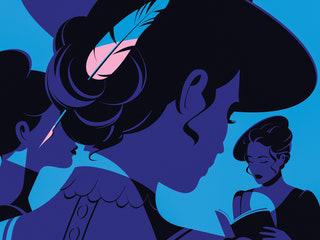
2024-07-15 3996词 晦涩
Still, eighteenth-century England did make room, with a kind of condescending, self-congratulatory gallantry, for exceptions: women like Thrale and Macaulay, who—without the benefit of the formal education denied to their gender—studied, translated, wrote prodigiously, and hosted intellectual gatherings with aplomb. As a group, they were known as the Bluestockings. They imagined for themselves a capacity for floating above the body, in a realm of refinement, reason, and rigorously elevated conversation: a tantalizing vision for brilliant women who did not wish to be immured in their anatomy. As the Irish writer and historian Susannah Gibson shows in her intelligent and engrossing new book, “The Bluestockings: A History of the First Women’s Movement” (Norton), their insistence on women’s rationality as the basis for equal treatment could make the Bluestockings quite punitive toward any among them who strayed from the straight and narrow. Respectability mattered enormously to them. In the end, it steered them into a cul-de-sac that bolder feminists would have to break out of.
免责声明:本文来自网络公开资料,仅供学习交流,其观点和倾向不代表本站立场。